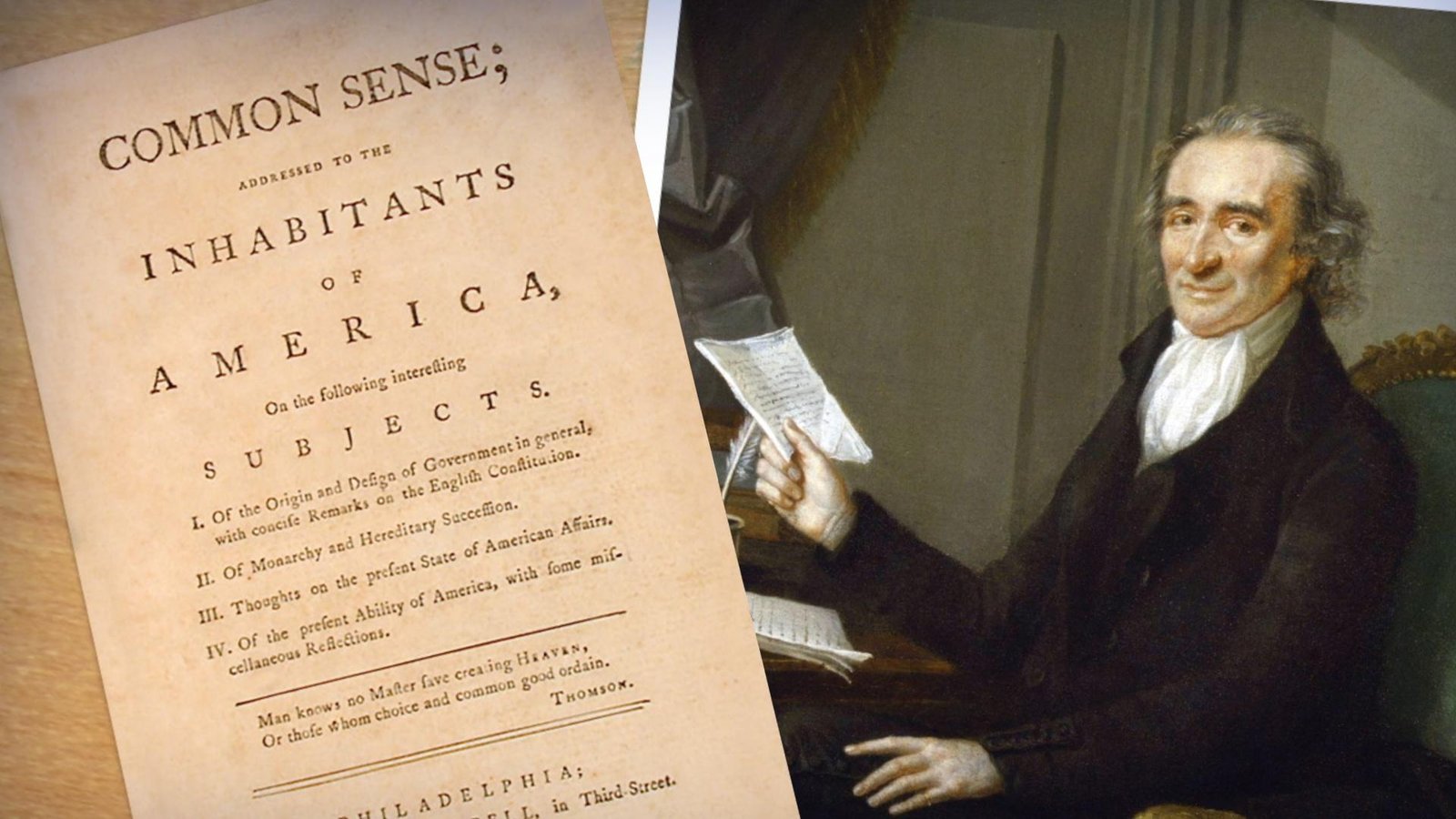On January 9, 1776, writer Thomas Paine publishes his pamphlet “Common Sense,” setting forth his arguments in favor of American independence. Although little used today, pamphlets were an important medium for the spread of ideas in the 16th through 19th centuries.
Originally published anonymously, “Common Sense” advocated independence for the American colonies from Britain and is considered one of the most influential pamphlets in American history. Credited with uniting average citizens and political leaders behind the idea of independence, “Common Sense” played a remarkable role in transforming a colonial squabble into the American Revolution.
At the time Paine wrote “Common Sense,” most colonists considered themselves to be aggrieved Britons. Paine fundamentally changed the tenor of colonists’ argument with the crown when he wrote the following: “Europe, and not England, is the parent country of America. This new world hath been the asylum for the persecuted lovers of civil and religious liberty from every part of Europe. Hither they have fled, not from the tender embraces of the mother, but from the cruelty of the monster; and it is so far true of England, that the same tyranny which drove the first emigrants from home, pursues their descendants still.”
Paine was born in England in 1737 and worked as a corset maker in his teens and, later, as a sailor and schoolteacher before becoming a prominent pamphleteer.
In 1774, Paine arrived in Philadelphia and soon came to support American independence.
Two years later, his 47-page pamphlet sold some 500,000 copies, powerfully influencing American opinion. Paine went on to serve in the U.S. Army and to work for the Committee of Foreign Affairs before returning to Europe in 1787.
Back in England, he continued writing pamphlets in support of the revolution. He released “The Rights of Man,” supporting the French Revolution in 1791-92, in answer to Edmund Burke’s famous “Reflections on the Revolution in France” (1790). His sentiments were highly unpopular with the still-monarchal British government, so he fled to France, where he was later arrested for his political opinions. He returned to the United States in 1802 and died in New York in 1809.

Johnny Punish founded VT in 2004. After 20 years at the helm, he “retired” from the daily operations in late 2023 passing the ball over to the new owner of VT, Chief Justin Time. He now writes for VT as “Writer Emeritus”. He is also a global citizen eco-activist, visionary, musician, artist, entertainer, businessman, investor, life coach, podcast host, and syndicated columnist.
Punish is an ethnically cleansed Palestinian-American whose maternal family was evicted from their home in Haifa, Palestine in 1948 by Irgun; a Euro-Zionist Settler Terrorist Group. The family became part of the over 1,000,000 Palestinians who are Al-Nakba refugees (The Catastrophe). The family fled to Beirut Lebanon for 13 years eventually emigrating to the USA in 1961 via a Brasilian passport obtained by his Palestinian Brasilian-born grandmother (In the early 1900s, the family was sent to Sao Paolo Brasil as guest workers in the mining industry. Punish’s father is Italian-American from New York City. Punish’s paternal great-grandparents emigrated to the USA from Naples Italy and Marineo in Sicily in the 1890s. Punish was born in the Bronx, New York in 1963.
Punish was educated at the University of Nevada Las Vegas (1980-81) and California State University Fullerton (1981-1984) with studies in accounting and business. Before the “internets” had been invented, he owned and ran (5) national newspapers in the United States of America from 1987-1998. From 2004 to 2023, he owned and managed VT Foreign Policy retiring at the end of 2023.
Punish is also a recording artist. He has over 100 original songs written. He records and produces music. A member of ASCAP, Punish has several songs placed in feature films. His music is promoted worldwide and played on all digital networks and net radio.
He is also the founder and owner of Global Thinkers, a freedom media that helps free thinkers create real wealth.
Resources: Facebook – YouTube – Apple Music – SoundCloud – Spotify – X (Twitter)
Read Johnny’s Full Bio at JohnnyPunish.com >>>
ATTENTION READERS
We See The World From All Sides and Want YOU To Be Fully InformedIn fact, intentional disinformation is a disgraceful scourge in media today. So to assuage any possible errant incorrect information posted herein, we strongly encourage you to seek corroboration from other non-VT sources before forming an educated opinion.
About VT - Policies & Disclosures - Comment Policy





Another popular book back then was The Law of Nations. Check it out. George Washington did. And it was used to write the US Constitution.
IT’S TRUE: Thomas Paine really did write the Declaration of Independence
The Declaration of Independence
Was It Written by Thomas Paine?
by
Walton Williams
Reprinted from the Hammondsport Herald of July 6, 1906
https://themillenniumreport.com/2017/07/its-true-thomas-paine-really-did-write-the-declaration-of-independence/
Comments are closed.